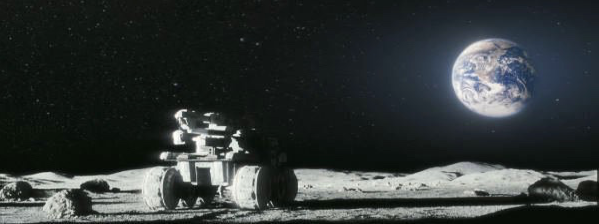Fusion Using Helium-3 from the Moon
We’ve noted that nuclear fusion produces “very little” radioactive waste, but what if we could bring that down to none at all? It turns out this is possible, but only if we use a fuel source that is not available on Earth — but is available on the Moon.
Here’s the idea: The fusion reactions that are being tested in ITER and other fusion reactors today fuse deuterium and another form of hydrogen, called tritium. This reaction releases fast-moving neutrons, and these neutrons will slam into the reactor walls, where they will be absorbed and make some of the material become radioactive (they also make the walls degrade over time). Therefore, the key to eliminating all radioactive waste from fusion is to do the fusion with reactions that don’t release neutrons. This can be done if, instead of using tritium, the fusion reaction uses a form of helium called helium-3 , so the reaction fuses deuterium and helium-3 (or, alternatively, fuses two helium-3 nuclei).
The problem is that helium-3 is so rare on Earth that we’d never be able to find enough of it for fusion power. However, helium-3 is present on the Moon, mixed in with the lunar soil , so in principle we could mine it from the Moon and bring it back to Earth for use in fusion power plants (Figure 1).

Before you get too excited, however, there are a couple of caveats. First, fusion with helium-3 poses some technological challenges that are likely to be even more difficult to meet than fusion with deuterium and tritium. Second, it’s unclear whether going all the way to the Moon for this fuel would be worth the cost to avoid the relatively small amount of radioactive waste from deuterium-tritium fusion.
Still, helium-3 has generated a lot of interest and excitement as a potential fusion fuel, and some people think it can be economically mined from the Moon and returned to Earth for fusion. And even if that proves impractical, the Moon’s helium-3 could provide fuel for fusion on the Moon and in spacecraft that could then travel to Mars and beyond. Indeed, if you picture an interplanetary future a couple of centuries from now, it seems very likely that at least some spacecraft will be powered with helium-3 fusion.